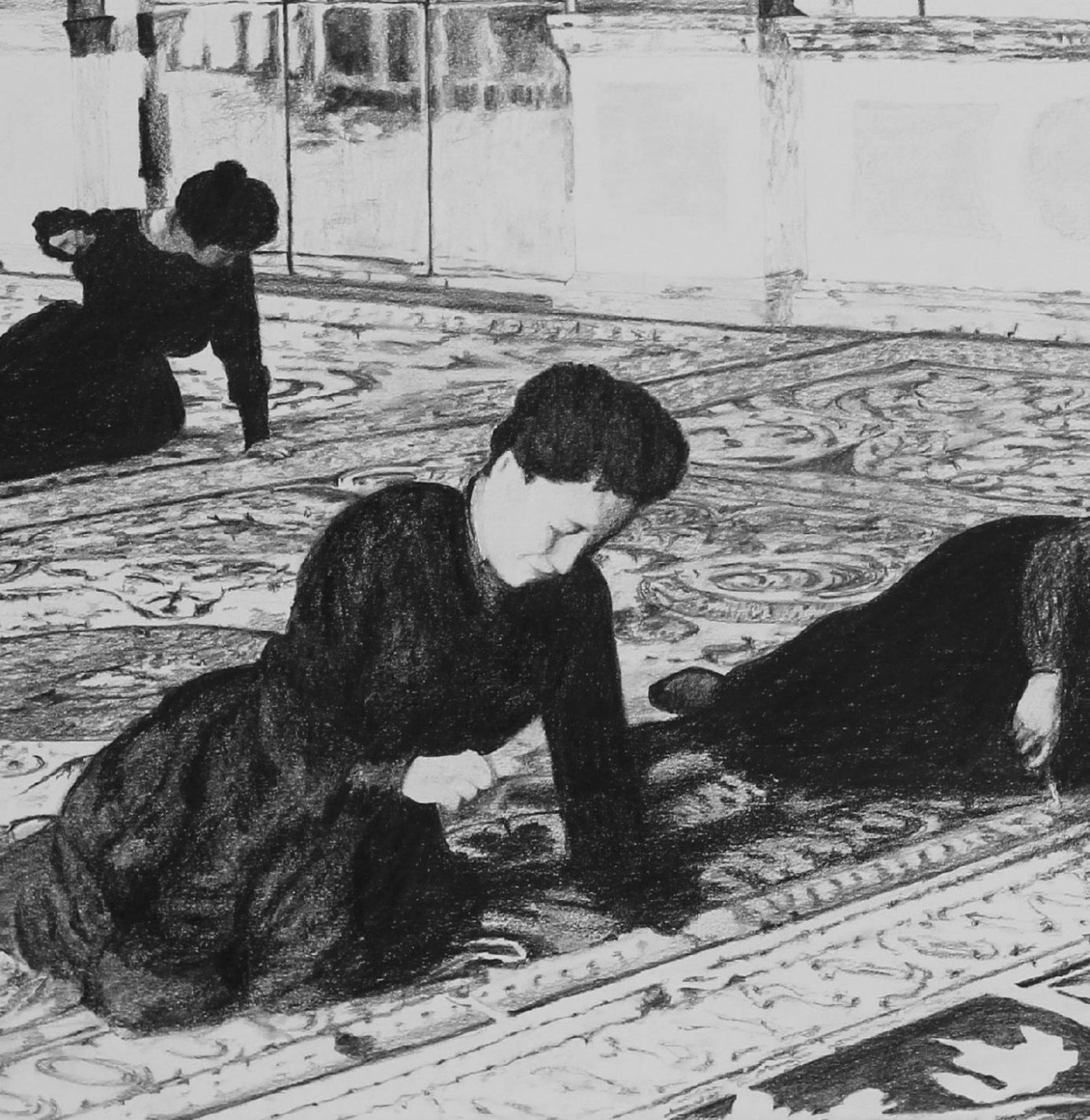
Collecteurs partners with CC Strombeek in Belgium as the cultural center hosts Sam Durant’s latest project, Proposal for Non-Aligned Monuments, Free Movement. In his most recent exhibition, Durant aims to shed light on the Non-Aligned Movement, an oft-forgotten element of 20th-century international history
In keeping with Collecteurs’ mission to give the public access to the world’s unseen artworks, we are excited to provide a platform for the latest installment of Sam Durant’s ongoing series, Proposals for Monuments. Just like Durant is making a proposal, with this presentation Collecteurs is proposing a new way to showcase exhibitions digitally. Rather than utilizing the dizzying new technologies such as VR and AR, we wanted to focus on the age-old art of storytelling. We hope that you will enjoy this presentation.
Born in 1961 and currently based in Berlin, Sam Durant won international acclaim in the 1990s with his outspoken politically and socially engaged work. Extensive research underlies his provocative dialogue with tumultuous or forgotten events from the past that cast a new light on the current social, political, or cultural dynamics.
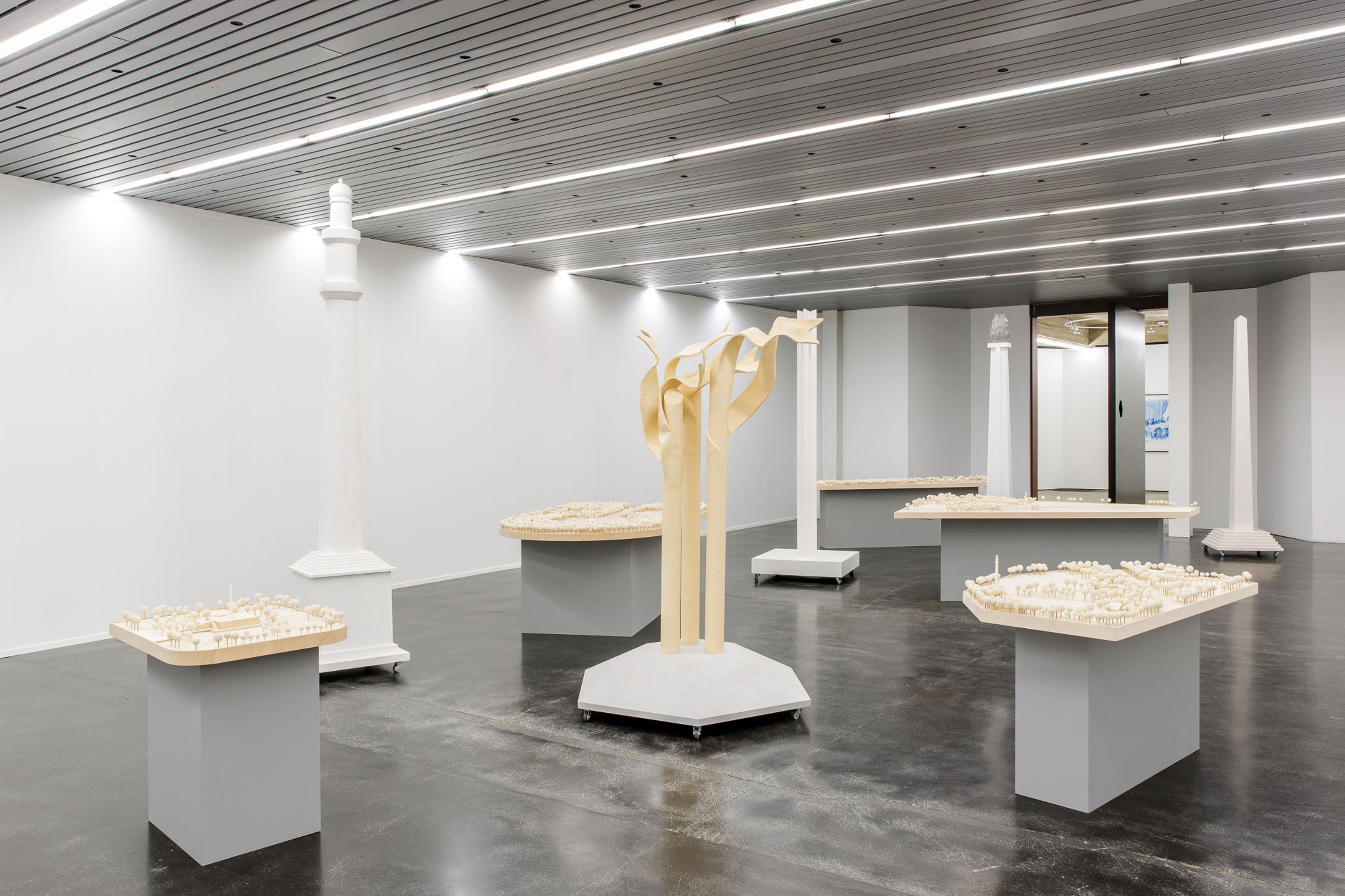
Proposal for Non-Aligned Monuments, Free Movement, 2020. Wood, foam rubber, acrylic, variable dimensions, approximately 132 m². 10 objects in all.
The interactive installation Proposal for Non-Aligned Monuments, Free Movement (PNMFM) is the heart of the exhibition. The work is dedicated to the Non-Aligned Movement (NAM), which was founded in 1961 at the instigation of Egypt, Ghana, Yugoslavia, Indonesia, and India. The movement was joined by countries that were not formally aligned with any of the two major power blocs at the time of the Cold War. The Afro-Asian group included mainly developing countries and at the time sharply criticized all forms of colonialism and imperialism. To date, the NAM counts over 120 countries, which together make up more than half of the world’s population. The organization functions as an international forum to discuss common interests.
Proposal for Non-Aligned Monuments, Free Movement is the most recent installation from the series Proposals for Monuments, on which Durant started to work in 1999. At a time the world is in full movement, Durant allows a new view of the present, while at the same time opening up possibilities for the future. PNMFM emerges as a model and emphasizes the role of the imagination and freedom of movement. The work tunes in to the current need for new concepts, initiatives, and alternative world views. “Another World is Possible,” a slogan that lights up the façade of Cc Strombeek while the exhibition is on, reflects this generous exploration of the status quo.

Still image. Video: Trope, 2020. Two-channel video projection with sound 12:35, looped (c) Sam Durant. Courtesy Blum & Poe, Los Angeles/New York/Tokyo.
The captivating video Trope, consisting of personal archive material from the artist, features a range of iconoclastic actions that span nations, cultures, and eras. Together with a new series of collages, the video illustrates Durant’s incessant interest in monuments and memorials, and their precarious symbolic status with regard to social change. In the context of social polarization, religious extremism, and disinformation, Proposal for Non-Aligned Monuments, Free Movement introduces a dose of humanity, while at the same time inviting the visitor to engage in (re)discovery and solidarity.
Sam Durant / Trope, 2020. Two-channel video projection with sound 12:35, looped. (c) Sam Durant. Courtesy Blum & Poe, Los Angeles/New York/Tokyo.
-Frantz Fanon, The Wretched of the Earth

1804
Haitian Independence. In 1791, enslaved Africans revolt against their French colonizers and in 1804 successfully win independence. Inspired by the French revolution of 1789, the Haitian revolution is the first successful independence struggle of the colonial period. It inspires the anti-slavery and anti-colonial independence movements in the 19th and 20th centuries. In the realm of philosophy, art historian Susan Buck-Morss theorizes its influence on G.W.F. Hegel’s development of the master-slave relationship and the theory of dialectics. Could Europe have been listening to its enslaved people for answers?
1878
King Leopold II establishes the private company Le Comité d’études du Haut-Congo and uses it to set up a colonial empire in Central Africa.

Scramble for Africa, 2020. Colored pencil on paper, 118.4 x 150.5 cm. (c) Sam Durant. Courtesy Paula Cooper Gallery, New York.
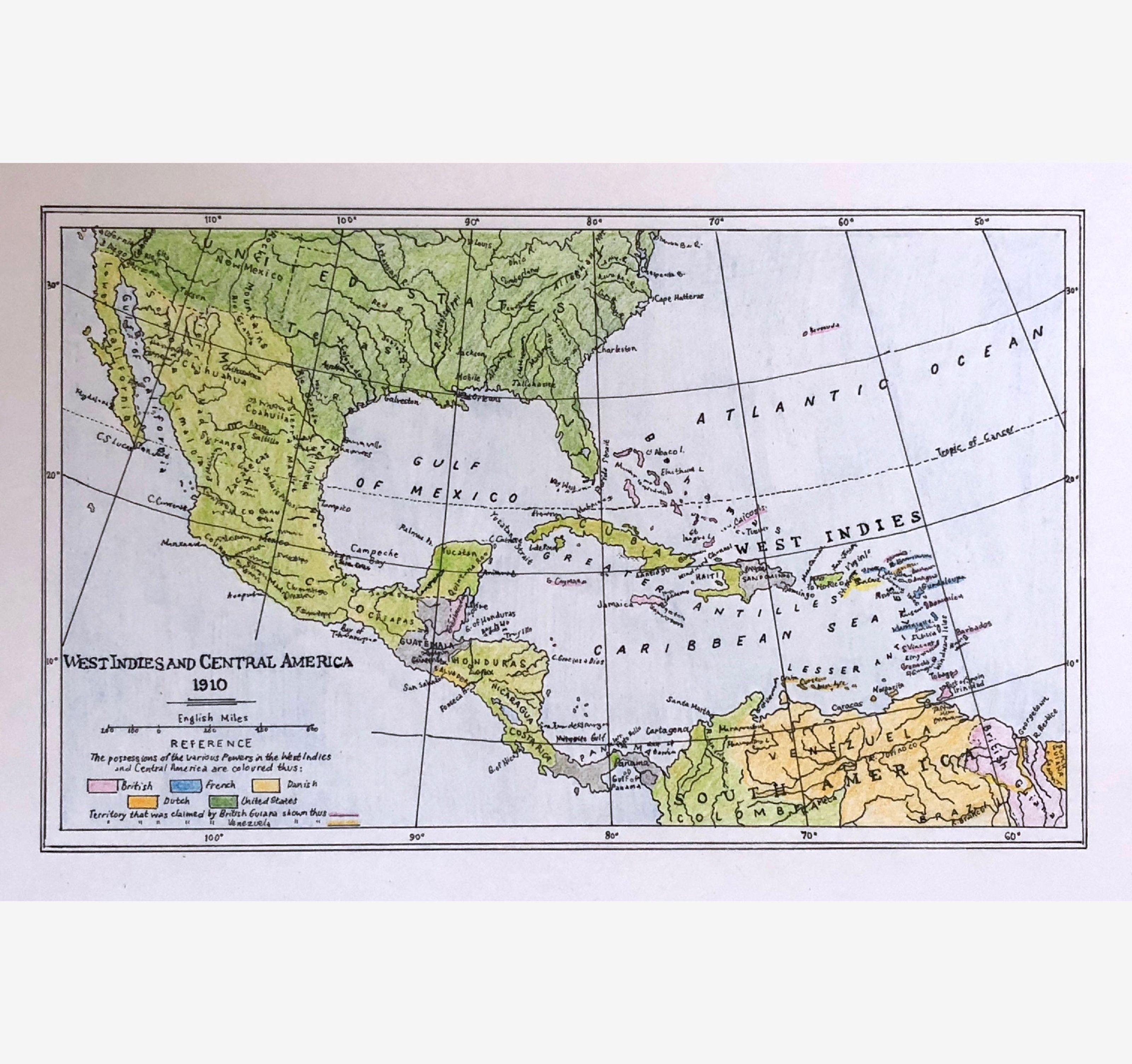
1905
Japan defeats Russia in a battle over the Korean peninsula. The first military victory over a “Great Power” by an Asian country, a big spark lighting the anti-colonial fires of the twentieth century.
1916
Asia Minor Agreement (Sykes-Picot Agreement). A secret pact that divides up the Ottoman Empire among France, England, and Russia. This agreement leads to the creation of the states of the modern Middle East, doing to the region what the Berlin Conference did to Africa.
1917
Russian Revolution. The Soviets reveal the details of the Asia Minor Agreement. During WWI, Britain and France use resistance groups across the Ottoman Empire to fight against the Axis powers with the promise of self-determination in the event of an Allied victory. The release of the Agreement shows the British and French had no intentions of relinquishing control of the region.
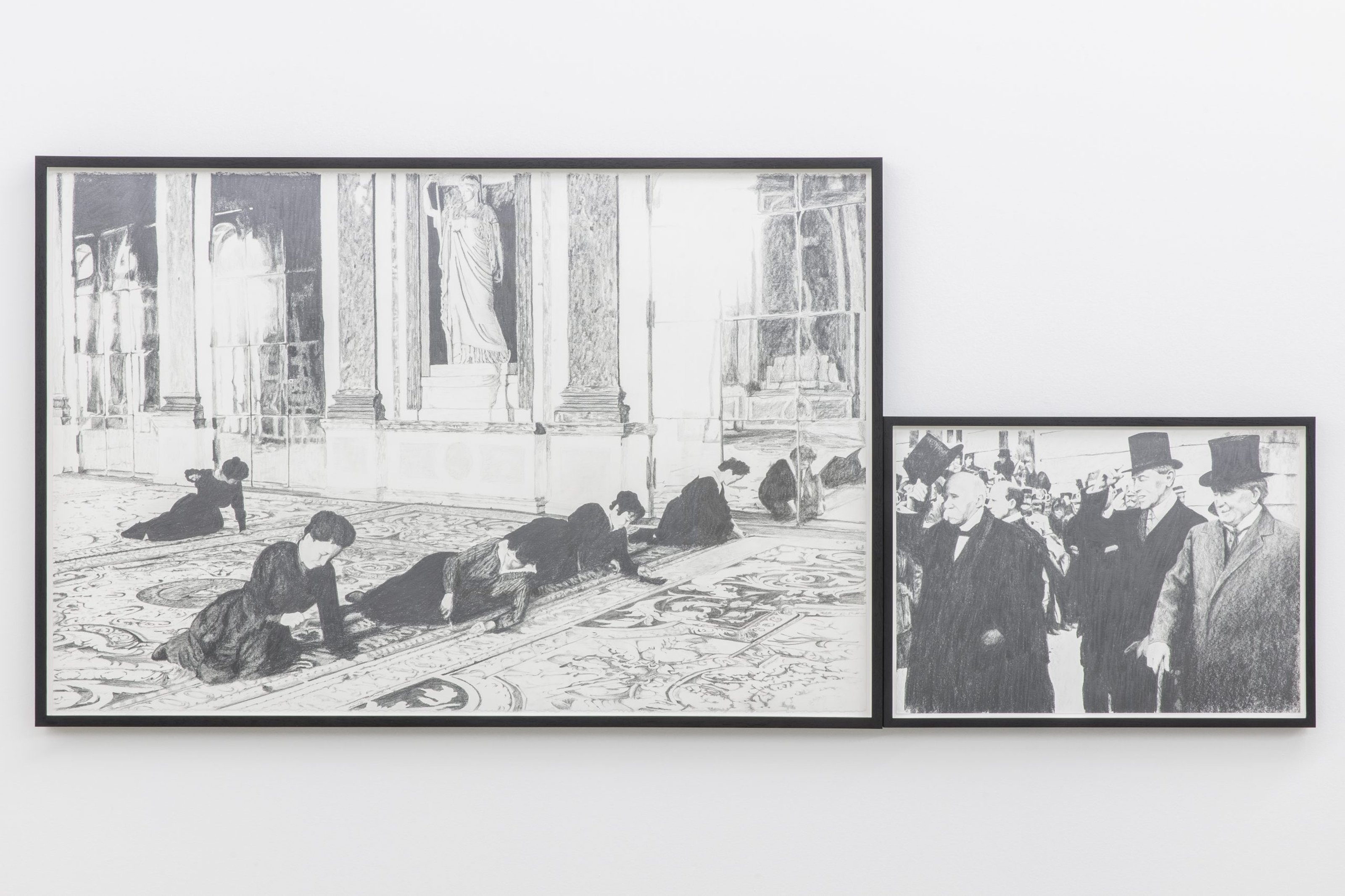
Men and Women Prepare (Treaty of Versailles), 2014. Graphite on paper, diptych: 101.6 x 152.1 cm. Small drawing: 39.2 x 54.1 cm. (c) Sam Durant. Courtesy Paula Cooper Gallery, New York.

1927
League Against Imperialism Conference in Brussels. The Third World’s response to the Paris Peace Conference. Ho Chi Min delivers a speech declaring rights to self-determination and independence for colonized people. An important precursor to the Non-Aligned Movement.
1944
Bretton Woods Conference establishes capitalist orthodoxy (monetary policy) in the Anglo-American sphere and creates the IMF and International Bank for Reconstruction and Development (World Bank).
1945
– The United Nations is formed in San Francisco with the aim of preventing future wars and establishing international law.
– Ho Chi Min declares the Democratic Republic of Vietnam, lasts for 20 days. France invades and recolonizes the country until its defeat and withdrawal in 1954.
– Indonesia declares independence. The Netherlands invades and unsuccessfully attempts to regain colonial control. Indonesian resistance triumphs in 1949. Although illegal under its laws, the UN is unable to stop either the Dutch or the French aggressions in Southeast Asia.
– The Arab League is formed in Cairo to promote Pan-Arabism across the Islamic world.
– Surrealist poet Aimé Césaire becomes mayor of Martinique’s capital Fort-de-France as well as a representative to the French constituent assembly.
1947
End of the British Raj; independence and partition of India and Pakistan.
1948
The Global Agreement on Trade and Tariffs (GATT) is established after the failure in the United Nations to successfully create a UN-based International Trade Organization. GATT was created to serve many economic and political needs in the wake of the Second World War, among them a strengthening of the Western capitalist system in opposition to the USSR. The terms “First World” and “Second World” come into usage.
1949
The North Atlantic Treaty Organization (NATO) is established as a mutual defense alliance between North American and Western European states, headquartered in Brussels.
1951–53
After holding democratic elections, Iran votes in Mohammad Mossadegh as Prime Minister and he nationalizes Iran’s oil. In 1953, a CIA-backed coup overthrows the Mossadegh government, installs Reza Shah as ruler, and returns the petroleum industry to Anglo-American control.
1955
Asian-African Conference in Bandung, Indonesia. First meeting of its kind of 29 newly independent states in the regions of Asia and Africa. The “Third World” is born.
– The Warsaw Pact is established by the Soviet Union and Eastern European communist countries as a counterweight to NATO. Yugoslavia remains politically independent, joining neither NATO nor the Warsaw Pact.
1956
Le Congrès des Écrivains et Artistes Noirs (Congress of Black Writers and Artists) in Paris. The first gathering of its kind, attended by the leading African and diaspora writers, artists, and intellectuals with discussions on slavery, anti-colonial and nationalist struggles.
– Egyptian leader Gamal Abdel Nasser nationalizes Suez Canal. A French- and British-led invasion to retake the canal fails, Nasser’s forces triumph. Stalin uses the invasion to justify sending in Soviet tanks to crush the Hungarian revolution.

Retreat of Colonialism in the Postwar Period, 2019. Colored pencil on paper, 21.3 x 29.5 cm. (c) Sam Durant. Courtesy Paula Cooper Gallery, New York.
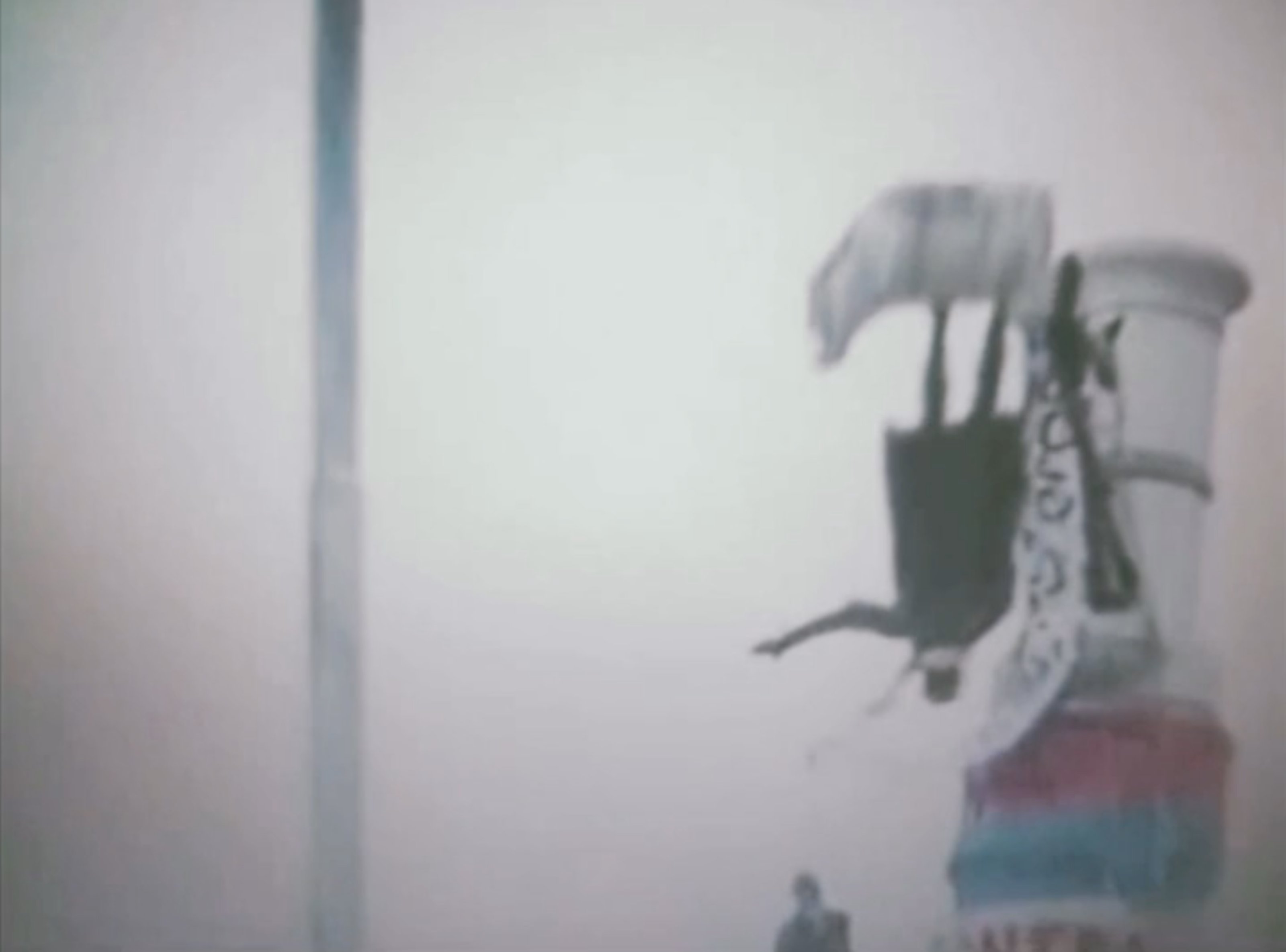
1957
The British colony Gold Coast becomes Ghana, the first independent black state in Africa. Pan-Africanist Kwame Nkrumah is its first President.
1960
The independent Democratic Republic of Congo is declared. Belgium relinquishes power to the people of the Congo. Patrice Lumumba becomes the first Prime Minister. Soon after, he is assassinated with the involvement of the Belgian, British, and US governments.
– The United Nations declares 1960 “The Year of Africa” as seventeen countries gain independence. Philosopher and Poet Leopold Sedar Senghor becomes President of independent Senegal.
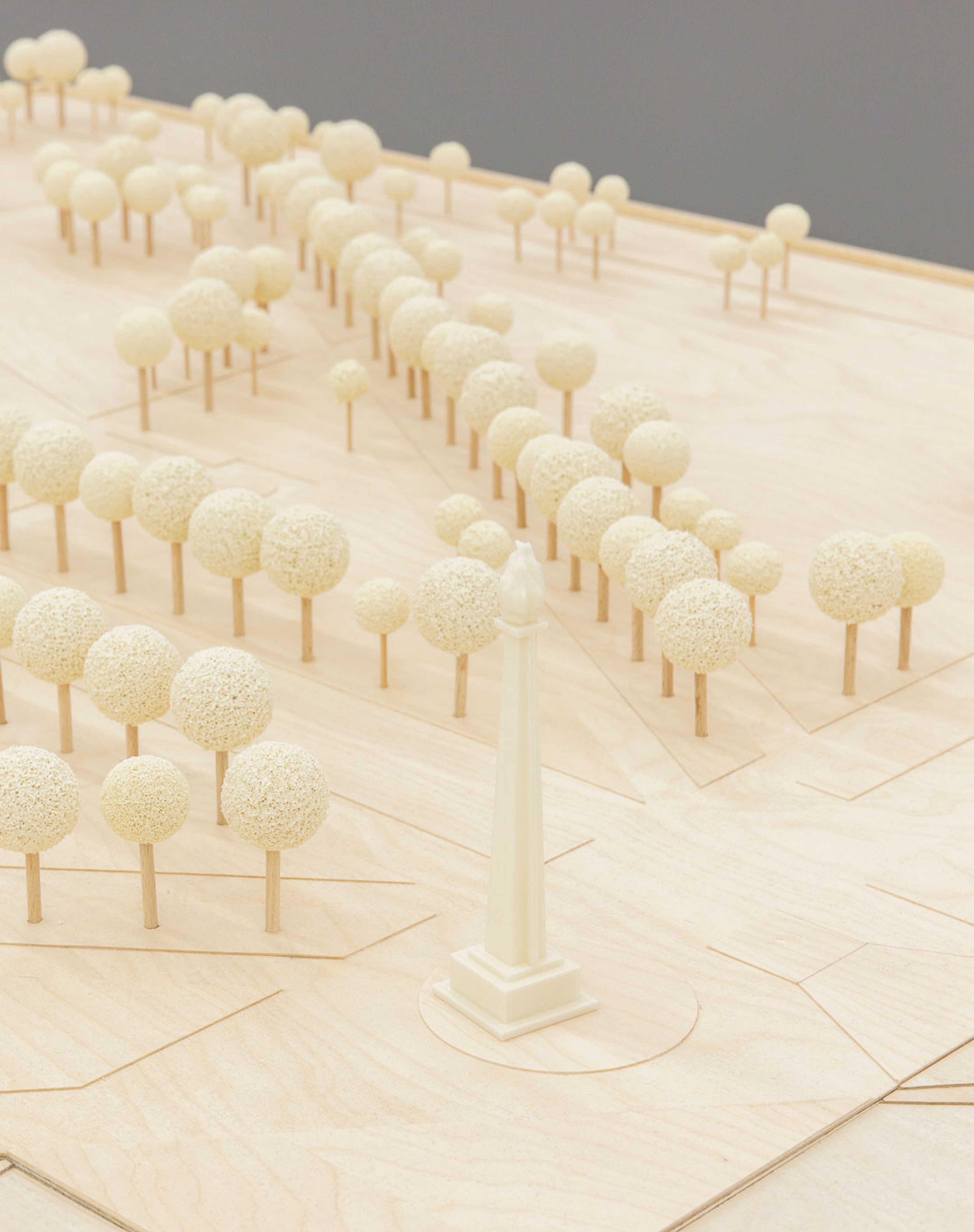


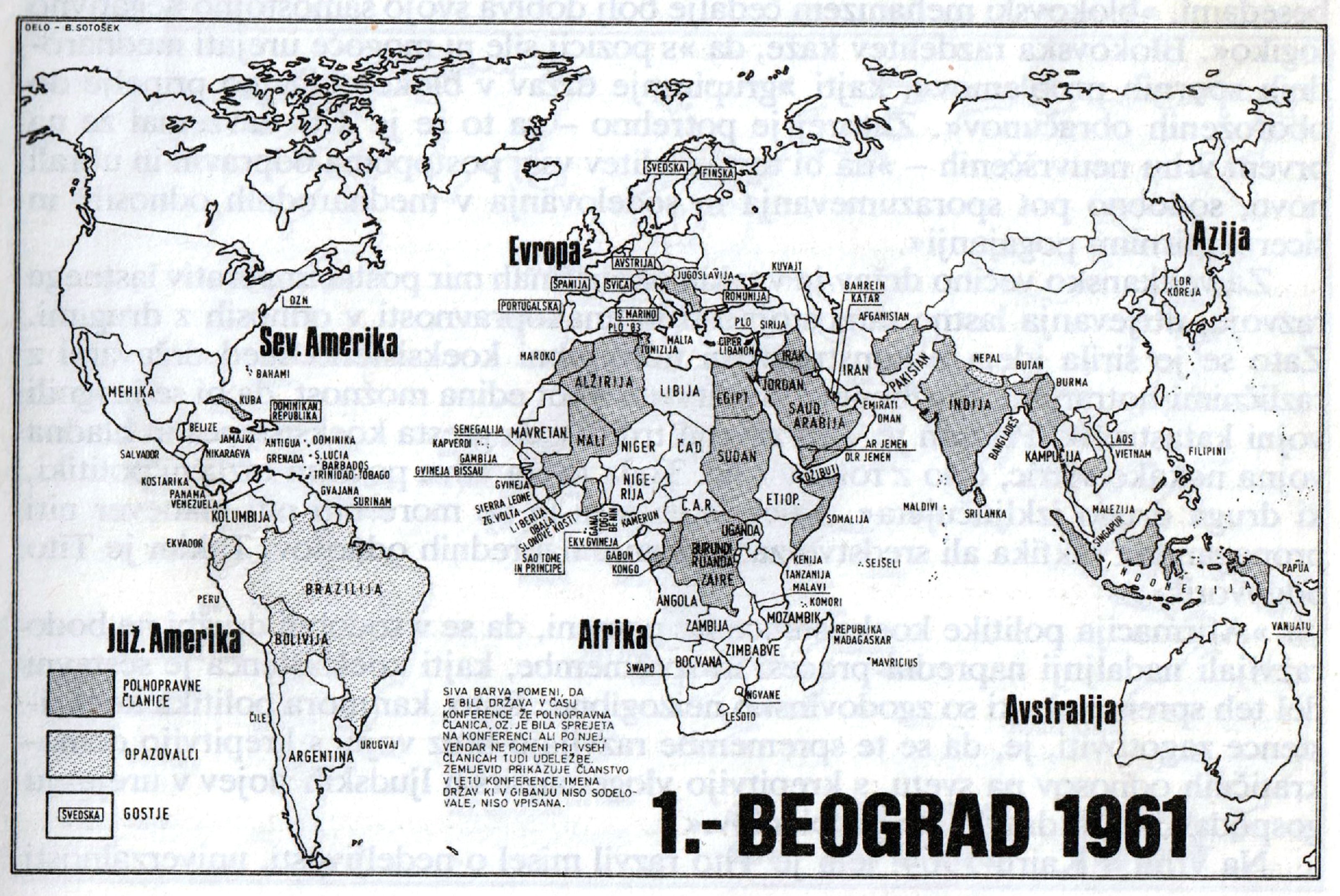
Belgrade 1961, Non Aligned Countries, 2020. Graphite, ink on paper, 21 x 29,7 cm. (c) Sam Durant. Courtesy Paula Cooper Gallery, New York
Bojana Piškur guides us through a brief history of the Non-Aligned Movement as a means of analyzing the cultural significance of its monuments (or lack thereof).

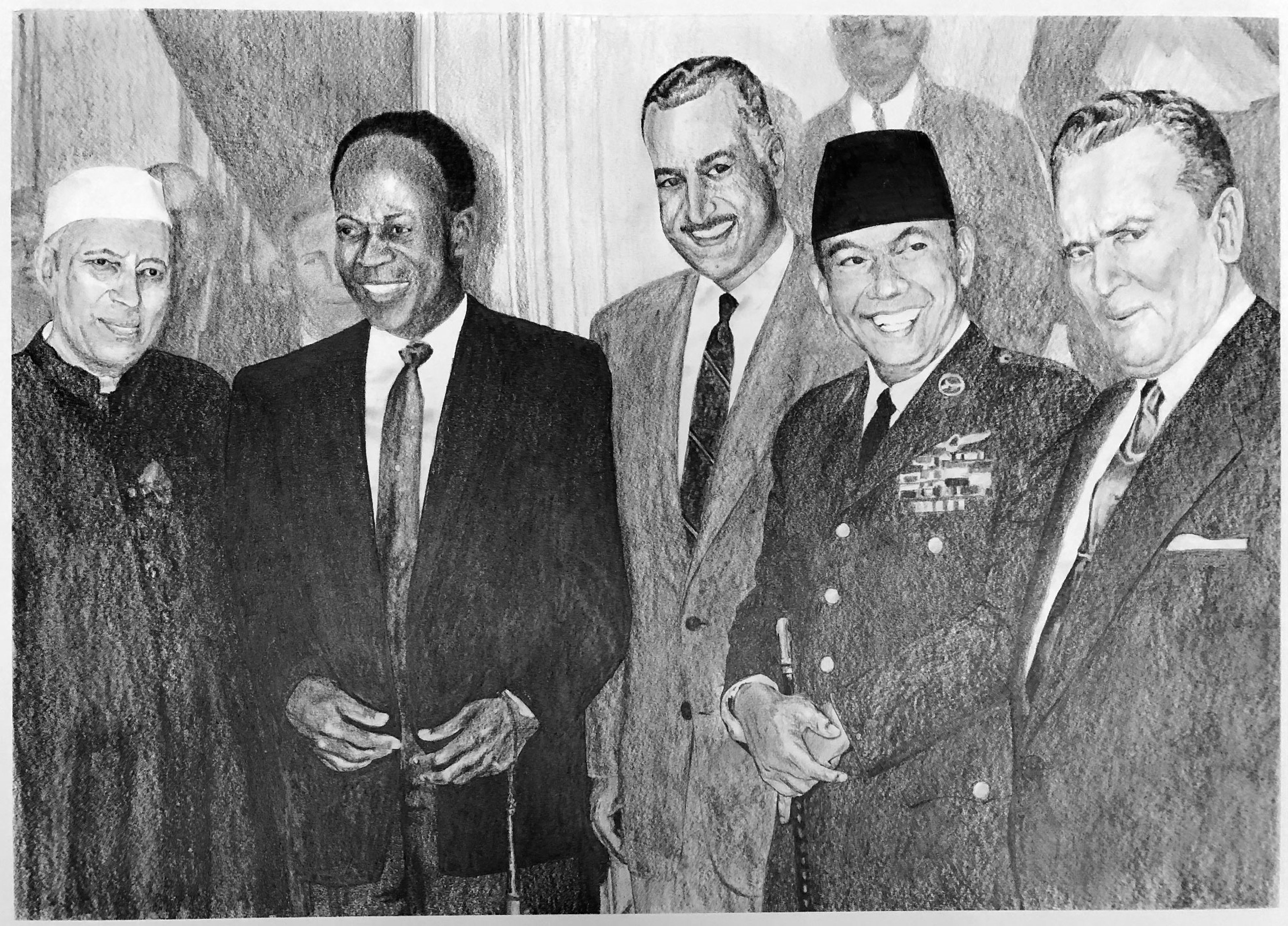
Non-Aligned Meeting, Belgrade 1961 (Nehru, Nkrumah, Nasser, Sukarno, Tito), 2019. Graphite on paper, 42.4 x 59.5 cm. (c) Sam Durant. Courtesy Paula Cooper Gallery, New York.

1962
Algeria wins independence from France after an eight-year struggle.
1964
Second NAM Summit in Cairo, Egypt.
1966
First Solidarity Conference of the Peoples of Africa, Asia, and Latin America (the Tricontinental Conference) in Havana, Cuba.
– Gillo Pontecorvo’s film The Battle of Algiers. A dramatization of the independence struggle shot in neorealist style employing many FLN veterans as actors. The film is banned in France yet inspires revolutionary movements around the world. Although the Pentagon screens it for military personnel in 2003, its lessons could not prevent the US invasion of Iraq.
1968
Global uprisings, Prague Spring, barricades in Paris, Vietnam War protests, civil rights demonstrations after assassination of Martin Luther King Jr., Democratic National Convention in Chicago, SDS congress in Berlin, Mexico City, etc.
1970
Third NAM Summit in Lusaka, Zambia.
1973
Fourth NAM Summit in Algiers, Algeria. For many, the NAM meeting in Algeria marks the beginning of the end of the NAM’s radical potential. In 2018, artist Naeem Mohaiemen’s film Two Meetings and a Funeral presents the theory that both external pressures but also internal decisions led to the decline of its influence and relevance.
1974
The World Council of Indigenous Peoples (WCIP) is formed during a meeting in New Zealand. The term “Fourth World” is coined to recognize indigenous peoples all over the world as a cultural and political group seeking rights and protections. WCIP leads to the formation of the UN Working Group on Indigenous Populations. Artist Jimmie Durham in his capacity as director of international affairs of the American Indian Movement (A.I.M.) leads the creation of this new UN body.
1976
Fifth NAM Summit in Colombo, Sri Lanka.
1978
Palestinian scholar Edward Said’s book Orientalism marks an important beginning of postcolonial studies.
1979
– The Soviet Union invades Afghanistan to prop up its client government. Mujahedeen resistance is supported by the U.S. The proxy Cold War battle becomes a contributing factor in the collapse of the USSR in 1989.
– Sixth NAM Summit in Havana, Cuba.
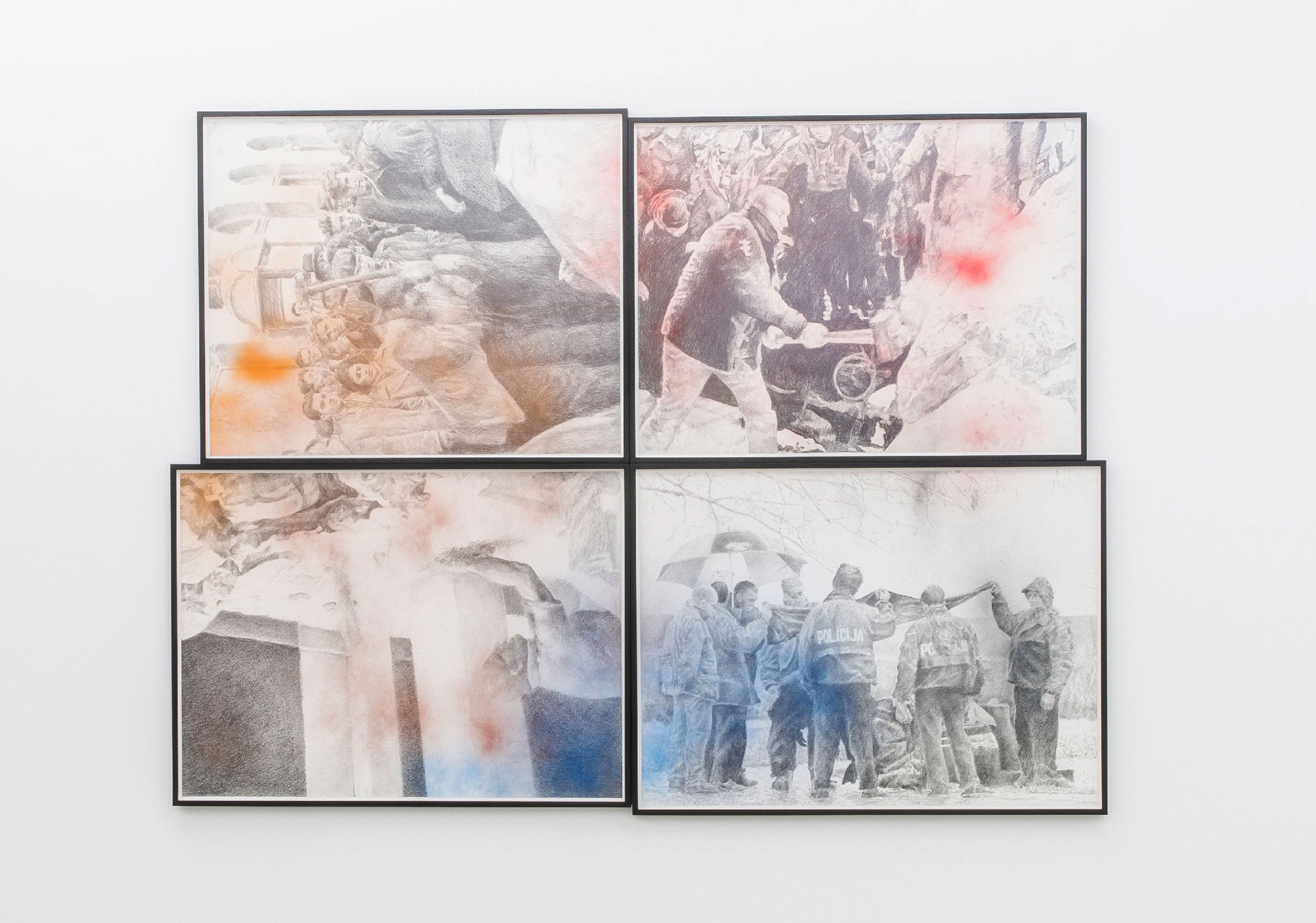
Palindrome, 2019. Pencil and spray paint on paper, 130.8 x 177.8 cm. (c) Sam Durant. Courtesy Paula Cooper Gallery, New York.
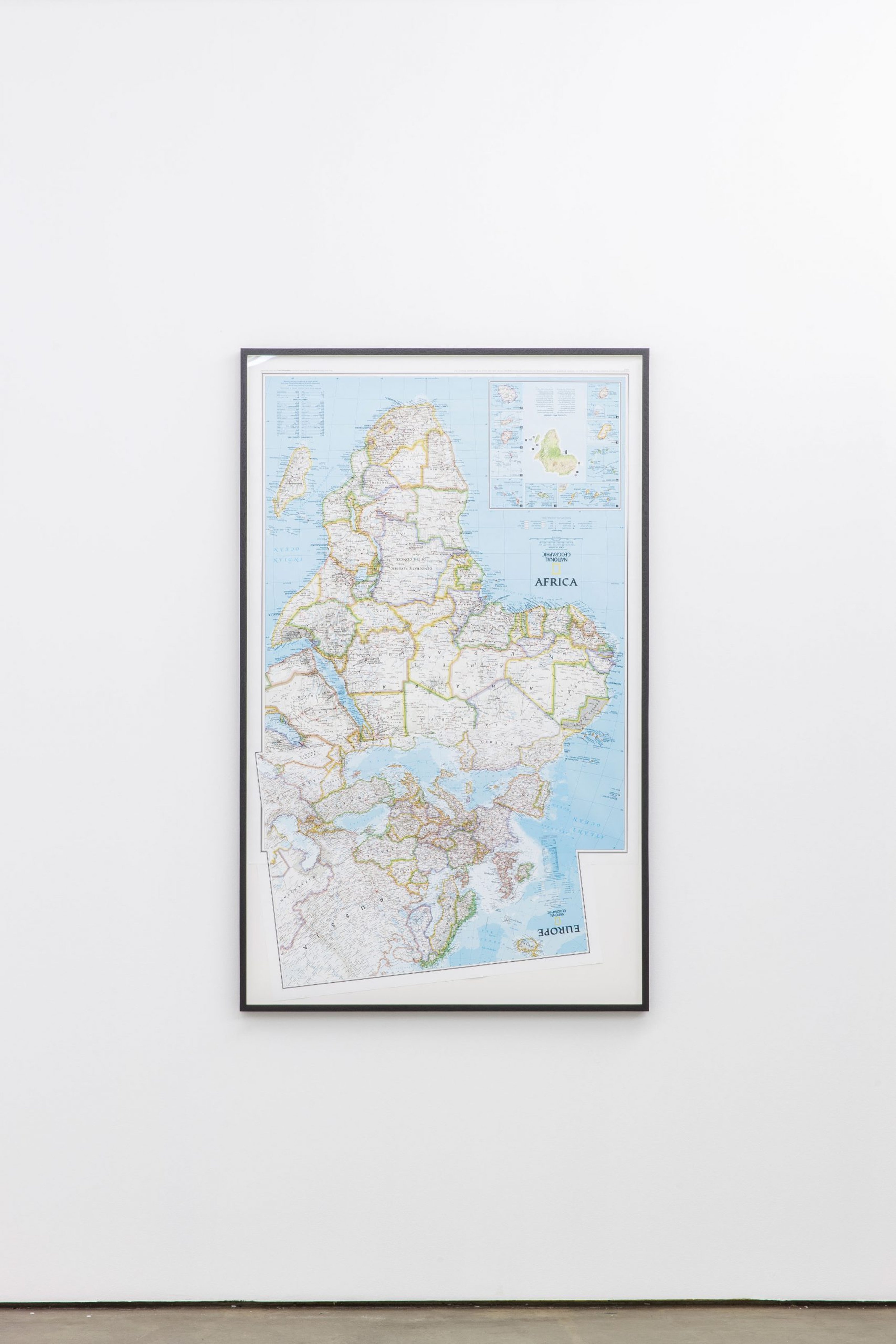
Proposal for Non-Aligned Monuments, Free Movement, 2020. Wood, foam rubber, acrylic variable dimensions, approximately 132 m², 10 objects in all. (c) Sam Durant. Courtesy Paula Cooper Gallery, New York.


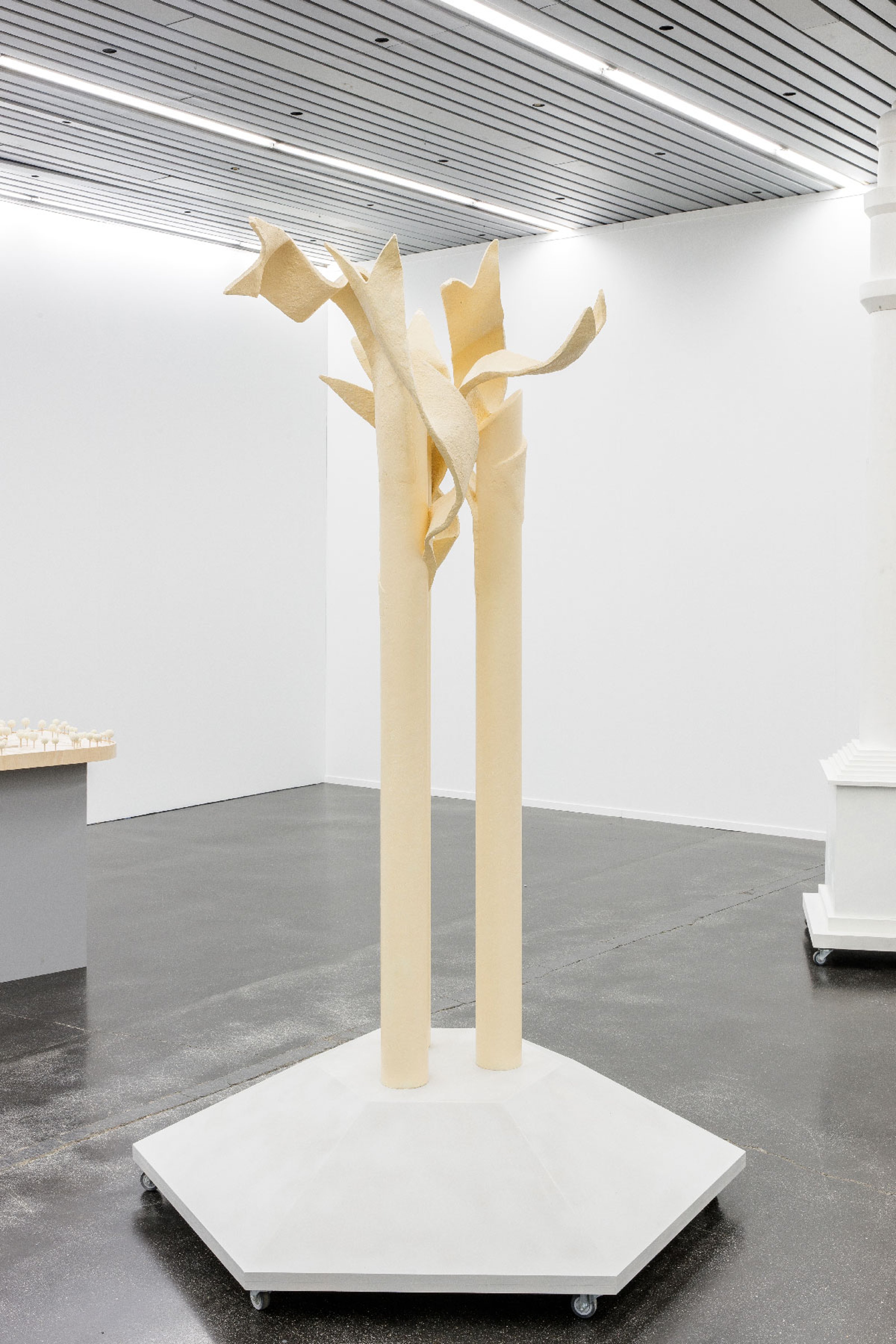
Proposal for Non-Aligned Monuments, Free Movement, 2020. Wood, foam rubber, acrylic variable dimensions, approximately 132 m², 10 objects in all. (c) Sam Durant. Courtesy Paula Cooper Gallery, New York.
Jörn Schafaff explores the conceptual contrast between Sam Durant’s scale models and stage plays to reveal the theatricality behind the exhibition.


1983
Seventh NAM Summit in New Delhi, India.
1986
Eighth NAM Summit in Harare, Zimbabwe.
1990
First meeting of the G15 in Kuala Lumpur. The G15 and much of the Third World realize its possibilities are limited as U.S. global hegemony is assured in the wake of the USSR’s collapse.
1991
– U.S. invasion of Iraq, the First Gulf War. The invasion of Iraq was understood as a demonstration of the consequences should any nation challenge the United States and its allies.
– Apartheid is abolished in South Africa, multiracial democracy established, Nelson Mandela becomes the first black President.
1992
Tenth NAM Summit in Jakarta, Indonesia.
1994
Zapatista uprising in Chiapas, Mexico sparked by the signing of the North American Free Trade Agreement (NAFTA). The EZLN (otherwise known as Zapatistas) are the indigenous peoples of Chiapas who start an uprising to take political and economic control of their region. It marks an important moment of revitalization of the indigenous rights movement.
1995
Eleventh NAM Summit in Cartagena, Colombia.
1996
The EZLN hosts an international meeting, the Intergalactic Encounter for Humanity and Against Neoliberalism, where progressives, radicals, and revolutionaries gather to organize movements to resist exploitation under the policies of the WTO, World Bank, and IMF. It marks the revival of international cooperation and is an important beginning of the antiglobalization movement, led by the indigenous people of Chiapas.
1997
Hong Kong independence from Britain, China promises to recognize its sovereignty for fifty years under the “One country, two systems” policy.
1998
Twelfth NAM Summit in Durban, South Africa.
1999
“Battle for Seattle” antiglobalization protest against WTO meeting in Seattle.
– The U.S. occupation of the Panama Canal Zone ends; it is ceded to Panamanian control.
2001
First convening of the newly established World Social Forum. From its beginnings in Chiapas to its confrontation in Seattle, the international movement for alternatives to Euro-American globalization finds organized expression in Porto Allegre, Brazil.
2003
Thirteenth NAM Summit in Kuala Lumpur, Malaysia.
2006
Fourteenth NAM Summit in Havana, Cuba.
2009
Fifteenth NAM Summit in Sharm el Sheikh, Egypt.
2010
The Arab Spring revolutions in Tunisia, Egypt, and Libya, civil war in Syria, uprisings in Yemen and Bahrain, and protests in several other Arab countries.
– The threat of Greece defaulting on its debts triggers the European sovereign debt crisis and the Republic of Ireland’s financial crisis.
2011
Tunisian President Ben Ali and Egypt’s Mubarak step down; Libyan dictator Qaddafi is killed by U.S.-led strikes. Beginning of the Syrian civil war.
– The “Occupy” movement begins in New York and spreads across the U.S.
2012
Sixteenth NAM Summit in Tehran, Iran.
2013
Euromaidan protest in Ukraine sparks a revolution and the overthrow of Viktor Yanukovych, leading to Russia’s annexation of Crimea and the War in Donbas.
2014
New Development Bank (NBD). Brazil, Russia, India, China, and South Africa establish the first challenge since the fall of the USSR to the World Bank’s monopoly on funding global development. Will it prove to be an alternative or a re-emergence of bipolarism?
– Hindu nationalist Narendra Modi elected Prime Minister of India on an anti-Muslim platform. Polarization, religious and sectarian violence on the rise.
2015
European migrant crisis. German chancellor Angela Merkel allows refugees in other EU countries to enter Germany, famously proclaiming “Wir schaffen das” (“We can do this!”). Will Merkel’s stunning example be sustained by Europe?
– Beginning of military intervention in Yemen by Saudi-led alliance, backed by USA, France, and Great Britain.
2016
The EU-Turkey deal comes into effect, allowing for refugees arriving to the Greek islands to be sent back to Turkey.
– Seventeenth NAM Summit in Porlamar, Venezuela.
2017
Daesh launch simultaneous attacks in Tehran, destroy the Great Mosque of al-Nuri in Mosul, Iraq, and kill 311 in Egypt, but are declared defeated in Iraq by the end of the year.
– Eighteenth NAM Summit in Baku, Azerbaijan.
2020–21
Extreme hunger crisis in Yemen.

Another World is Possible, 2020. Lightbox with vinyl text, 193 x 241 x 20 cm. (c) Sam Durant. Courtesy Blum & Poe, Los Angeles/New York/Tokyo
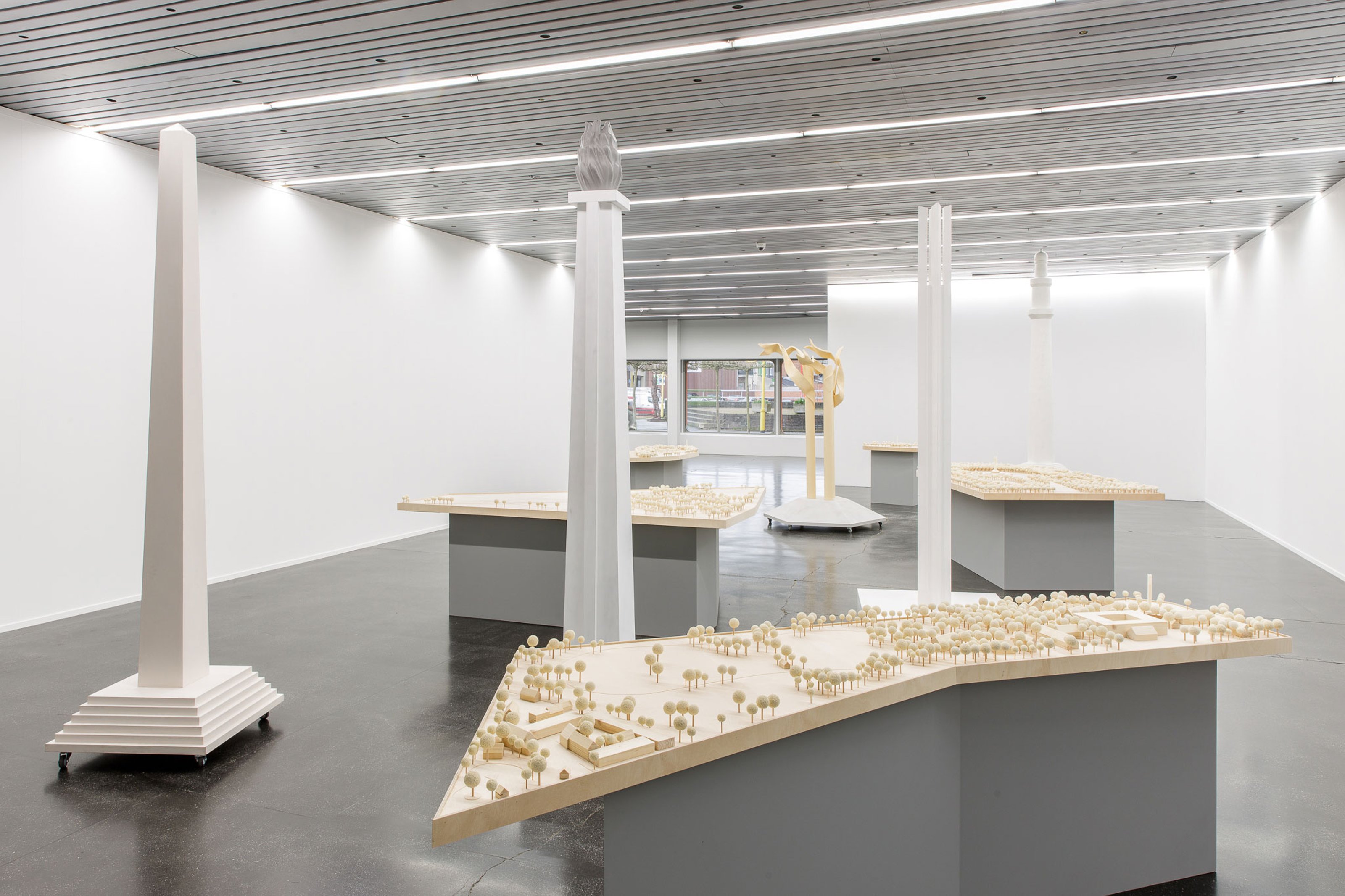

Collecteurs is proud to present our video interview with Sam Durant, who’s been living in Berlin for the past three years. With a new show currently on display at CC Strombeek in Belgium, Sam chats about his new project as well as adjusting to life in Europe, the value and role of art in the present day, his thoughts on censorship in arts and culture, and of course the controversy that ensued when the Walker Art Center in Minneapolis acquired and presented his work “Scaffold” in 2017.
Watch the video interview here:
Listen to the podcast here: